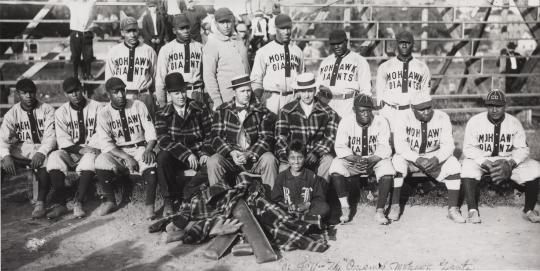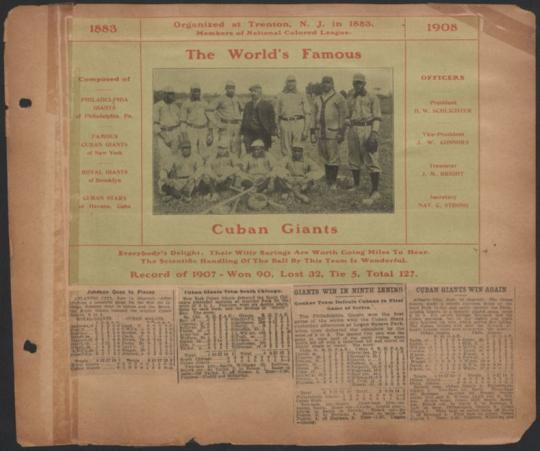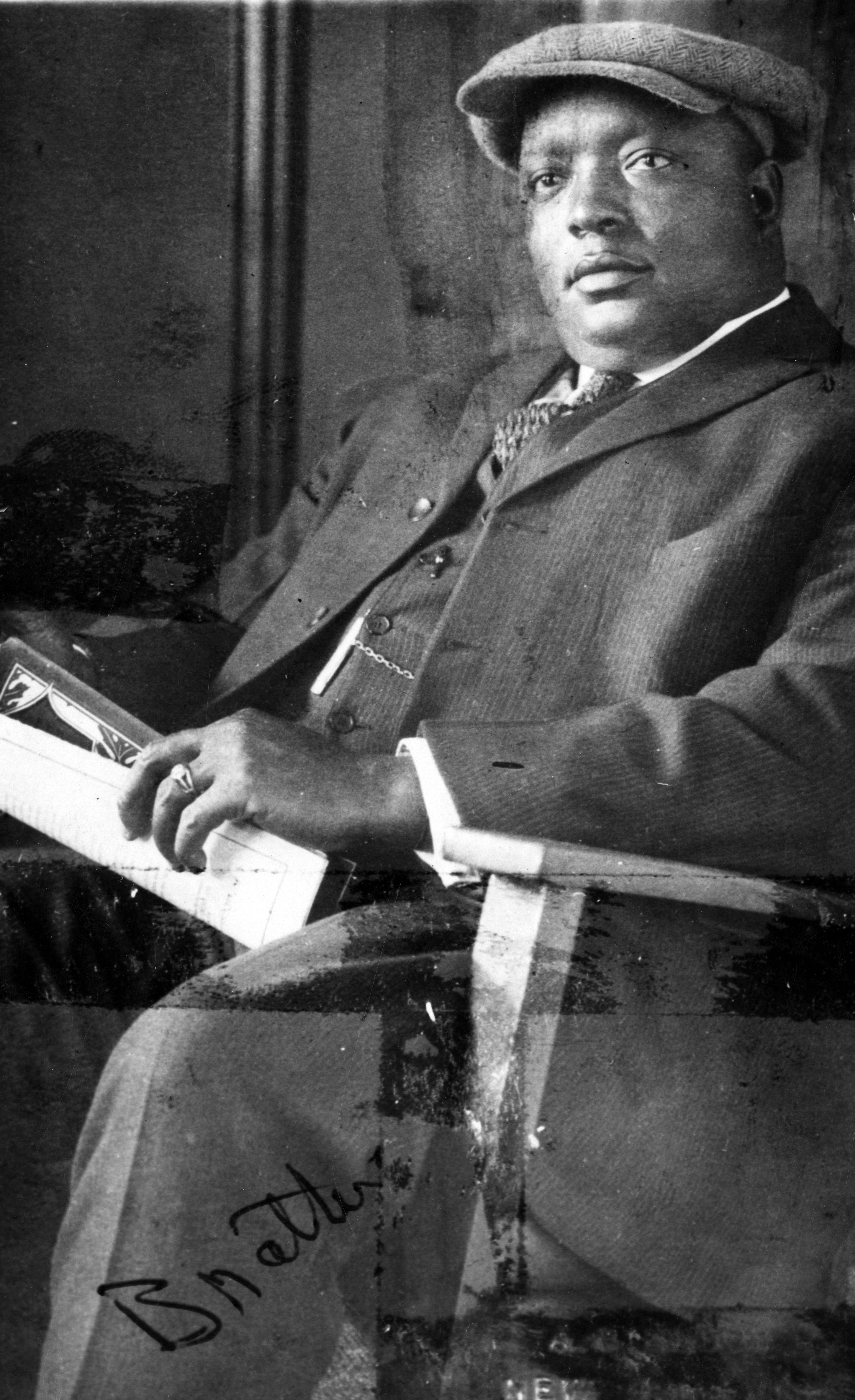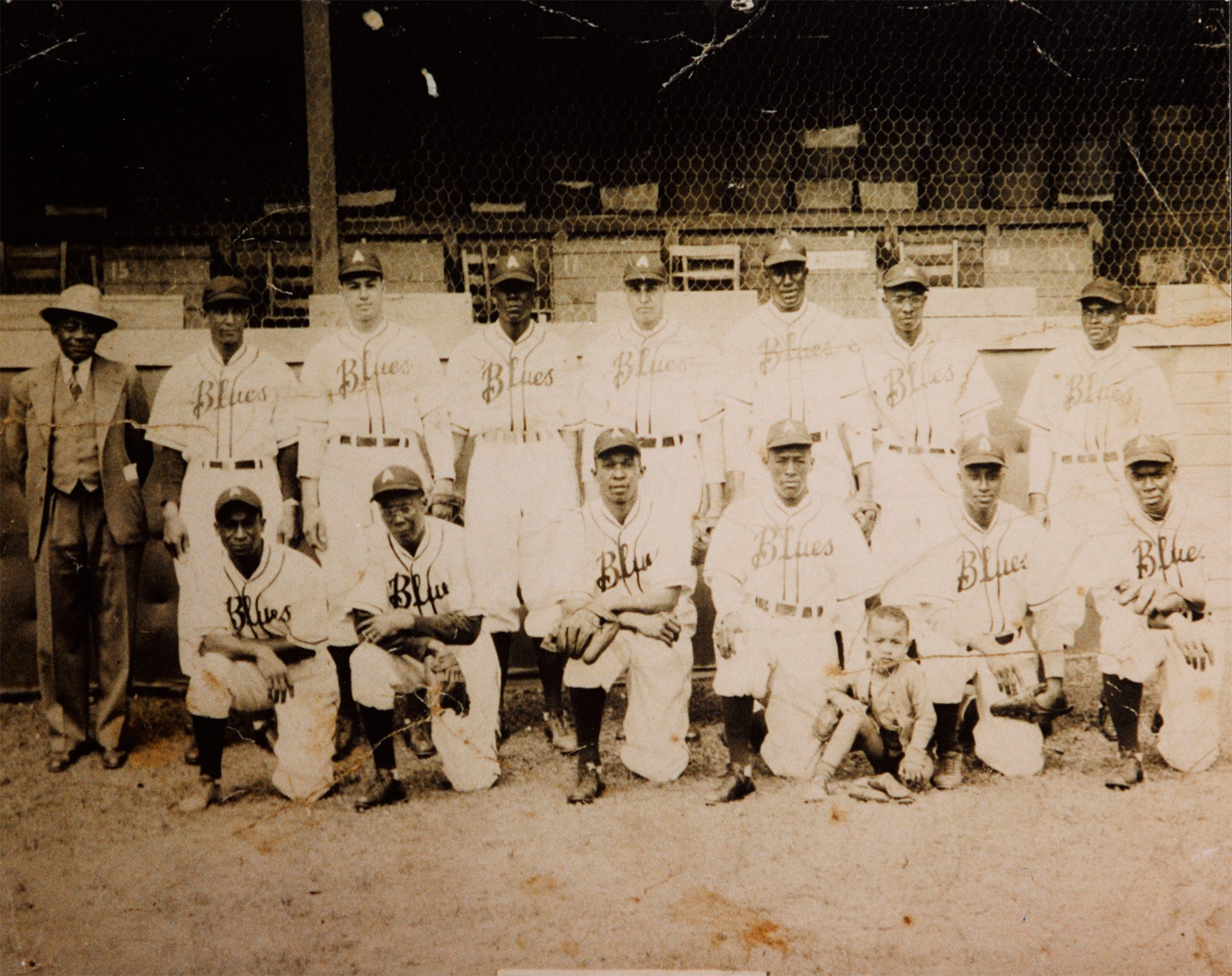- Home
- Our Stories
- #Shortstops: History’s mysteries preserved in Big Bill Smith scrapbook
#Shortstops: History’s mysteries preserved in Big Bill Smith scrapbook
During 2020, the baseball world “tipped their caps” to the 100th Anniversary of the founding of the Negro National League.
The National Baseball Hall of Fame and Museum has dozens of artifacts from incredible players of the Negro Leagues – and one of the more unique items is something held in the Library’s vast collection. It is the scrapbook of William T. “Big Bill” Smith, most likely from 1906-1914.
Hall of Fame Membership
There is no simpler, and more essential, way to demonstrate your support than to sign on as a Museum Member.
Smith played for many teams as well as managed. He was primarily a catcher and first baseman who, according to an article in the scrapbook, got his start at Fisk University in Nashville, Tenn. By all accounts, he was a smart and intuitive players who went on to be a successful manager of several teams, including launching the New York Black Sox in 1910 and the Schenectady Mohawk Giants in 1914.
After his successful baseball career ended, he moved on to Indianapolis, where he became a contracting painter.
According to the article announcing this news, Smith “comes from a family of painters who are well known throughout the south where they conduct large business along that line.”
The scrapbook, measuring 11.5 by 9.5 inches – now unbound, but with a black cover and 28 pages, individually protected – is one of the more unassuming pieces in the Library’s collection. But what is most interesting about the scrapbook is what is inside. There are several articles about Smith and his teams, as well as a few photographs that can be presumed to be of Smith. It includes some biographical information on Frank Wickware, a pitcher for several teams, mostly in Chicago, and Chappie Johnson, a catcher for about four seasons. It also includes information on a publisher named George Know.
Surprisingly, in a scrapbook named for him, there is very little biographical information on Smith himself. Even after Larry Lester’s call for information in the June 2013 issue of “The Courier: A Publication of SABR’s Negro Leagues Committee,” there is still little known about Smith.
In August of 2020, a researcher sent information on Smith to Lester for the Library’s biographical clipping file on Smith. The information, mostly from Ancestry.com’s collection of census records, helps to answer some basic biographical information, like Smith’s date of death, believed to be Oct. 10, 1940.
Like many of the scrapbooks in the collection, these are items that were collected within that don’t necessarily fit with the scrapbook’s theme. In this case, one is an undated article from the Kansas City Star titled “The Cradle of Baseball: the Great National Pastime was Born in Hoboken, N.J., Away Back in 1845.” It details the rules, the “first game”, played by the Knickerbockers and New York Citys, and some of the history of the game up until 1888.
Another is an illustration from a newspaper of a championship game from 1866. It was between the Brooklyn Atlantics and Philadelphia Athletics and gives a brief description of the scene before being torn away at the bottom.
The scene, while recognizable today as baseball, isn’t the game we know today, as evidenced the placement of the catcher (a “respectable distance” from the batter) and the umpire, sitting on the ground by first base.
Unfortunately, not much is known about the origins of the scrapbook. Did Smith put it together himself or perhaps a family member or fan of Smith’s? The only clue is a sticker of the inside front cover, declaring the scrapbook as belonging to a Thelma Smith. According to a 1910 United States Federal Census record from New York City, Thelma may have been a daughter of Smith and his wife, Mary. However, Thelma and Mary do not appear on any subsequent census records relating to Smith.
Whatever the origin and whoever the creator, Big Bill Smith’s scrapbook has a permanent home here in the Library.
Cassidy Lent is the library director at the National Baseball Hall of Fame and Museum






